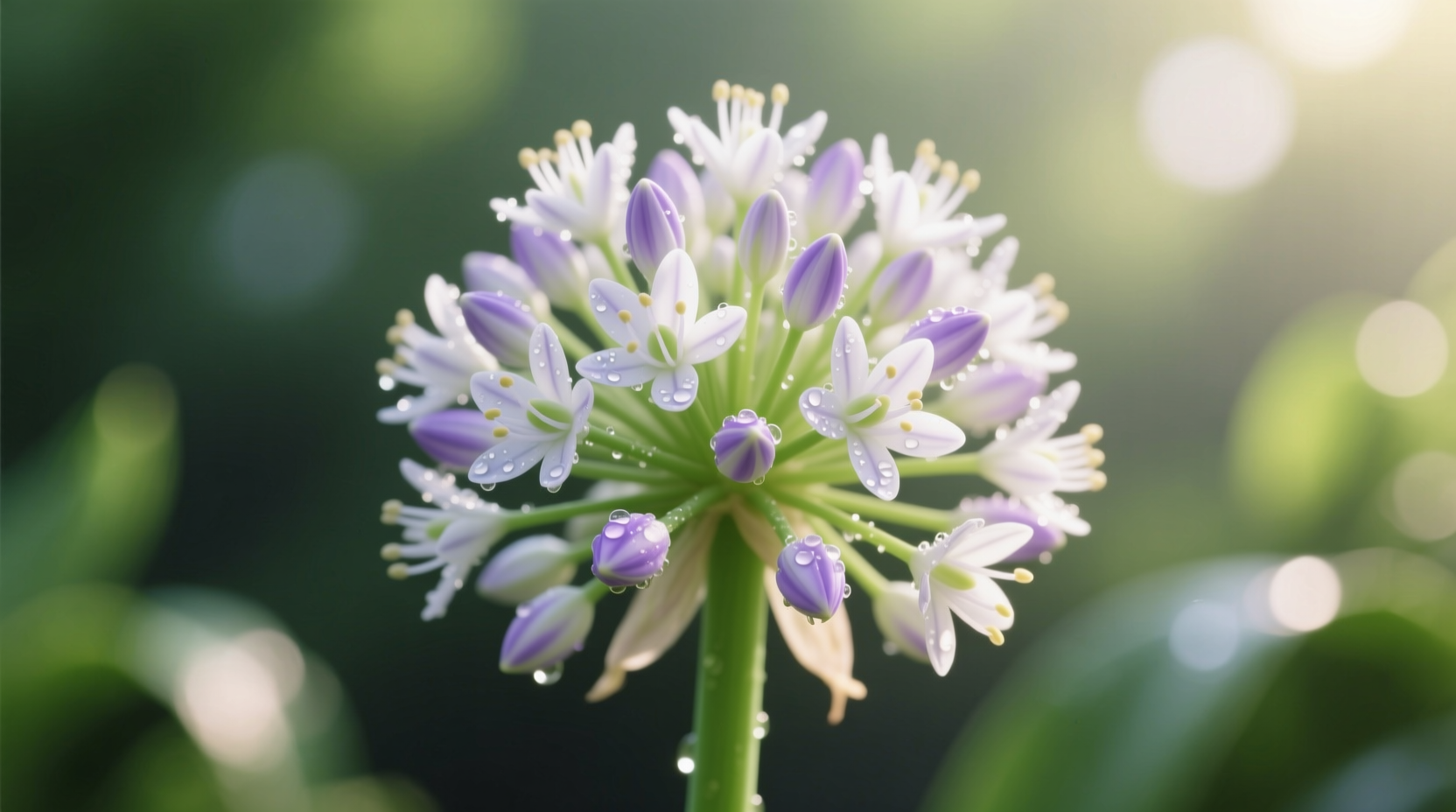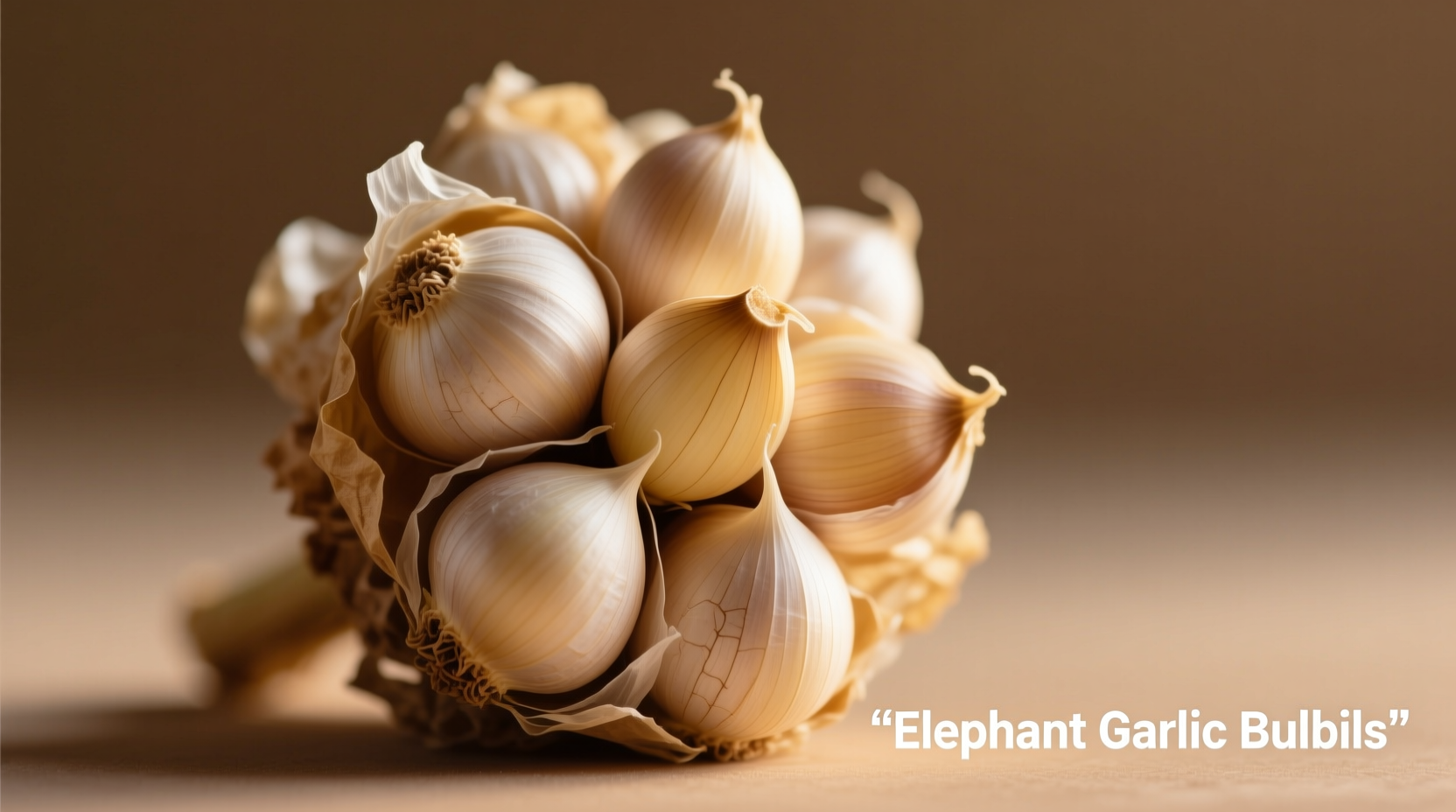Discover how these tiny propagation gems can transform your gardening experience. Unlike regular cloves, bulbils allow you to grow multiple plants from a single garlic scape while maintaining genetic purity. This comprehensive guide reveals everything you need to know about harvesting, planting, and growing elephant garlic from bulbils—saving you money and expanding your harvest with minimal effort.
What Exactly Are Elephant Garlic Bulbils?
Elephant garlic bulbils are miniature garlic bulbs that develop in the flower head (scape) of mature elephant garlic plants. These tiny propagation units, typically ranging from 1/8 to 1/4 inch in diameter, form clusters within the protective bract of the flowering stalk. Unlike traditional garlic cloves that grow underground in a bulb, bulbils develop aerially and represent the plant's natural seed-producing mechanism.
While elephant garlic (Allium ampeloprasum var. ampeloprasum) isn't true garlic but rather a type of leek, its propagation methods share similarities with hardneck garlic varieties. The bulbils contain complete genetic information, allowing them to grow into full-sized plants when properly cultivated.
Why Gardeners Prefer Bulbils Over Traditional Cloves
Seasoned gardeners increasingly choose bulbils for several compelling reasons:
- Cost efficiency—One mature plant can produce 50-100 bulbils, multiplying your planting stock exponentially
- Disease resistance—Bulbils avoid soil-borne pathogens that often affect cloves
- Genetic preservation—Maintains the exact characteristics of your preferred elephant garlic variety
- Ease of storage—Bulbils remain viable longer than cloves when stored properly
According to agricultural research from Cornell University's Department of Horticulture, bulbil propagation reduces the risk of white rot and other fungal diseases by up to 70% compared to traditional clove planting methods. This makes bulbils particularly valuable for gardeners in humid climates where soil pathogens thrive.
Harvesting Elephant Garlic Bulbils: Timing Is Everything
The optimal window for harvesting bulbils occurs when the scape begins to yellow but before the flower head fully opens. Watch for these visual indicators:
- The protective bract starts to split open
- Bulbils feel firm when gently squeezed
- Lower leaves of the plant begin to yellow
Harvest bulbils on a dry morning after the dew has evaporated. Carefully cut the entire scape about 6 inches below the flower head. Place harvested scapes in a well-ventilated area away from direct sunlight for 7-10 days to cure before extracting the bulbils.

Planting Elephant Garlic Bulbils: Step-by-Step Guide
Follow these steps for successful bulbil propagation:
- Prepare the soil—Create loose, well-draining beds with pH 6.0-7.5
- Planting depth—Sow bulbils 1-2 inches deep, spacing 2-3 inches apart
- Timing—Plant in fall (4-6 weeks before first frost) for best results
- Watering—Keep soil consistently moist but not waterlogged
- First-year growth—Expect single-clove 'rounds' rather than full bulbs
During the first growing season, bulbils develop into small single-clove bulbs called 'rounds.' These rounds require an additional growing season to develop into full, multi-cloved elephant garlic bulbs. This two-year cycle represents the primary limitation of bulbil propagation compared to immediate clove planting.
Elephant Garlic Bulbils vs. Traditional Cloves: Key Differences
| Characteristic | Bulbils | Traditional Cloves |
|---|---|---|
| Propagation time | Two growing seasons to full bulb | One growing season |
| Yield per plant | 50-100 new plants | 5-12 new plants |
| Disease resistance | Higher (aerial propagation) | Lower (soil exposure) |
| Genetic consistency | Exact clone of parent plant | May show variation |
| Storage longevity | Up to 12 months | 6-8 months |
Growth Timeline: What to Expect When Growing from Bulbils
Understanding the development stages helps set realistic expectations:
- Weeks 1-4: Bulbils sprout and establish root systems
- Months 2-4: Green shoots emerge, forming single-clove 'rounds'
- Month 6: First-year harvest yields small, single-clove bulbs
- Year 2: Rounds develop into full, multi-cloved elephant garlic bulbs
Research from the University of California Cooperative Extension shows that properly stored bulbils maintain 85-90% viability for up to 12 months when kept in cool, dry conditions. This extended viability window provides greater planting flexibility compared to cloves, which typically lose viability after 6-8 months.
Common Mistakes to Avoid with Elephant Garlic Bulbils
Even experienced gardeners encounter pitfalls when working with bulbils:
- Planting too deep—Bulbils need shallow planting (1-2 inches) for proper sprouting
- Expecting first-year bulbs—Understanding the two-year growth cycle prevents disappointment
- Overwatering—Bulbils rot easily in waterlogged soil during establishment
- Harvesting too early—Wait until 30-50% of leaves have yellowed for optimal bulb development
Gardeners in USDA zones 3-8 achieve the best results with fall-planted bulbils, while those in warmer zones (9-10) should plant in late winter for optimal vernalization. This climate-specific timing represents a crucial context boundary for successful bulbil cultivation.
Practical Applications Beyond the Garden
While primarily used for propagation, elephant garlic bulbils offer culinary versatility:
- Use fresh bulbils in salads for a mild garlic flavor
- Pickle young bulbils for unique condiments
- Add to stir-fries as a delicate garlic substitute
- Roast with other vegetables for subtle flavor enhancement
Unlike mature elephant garlic cloves, bulbils deliver a milder, more nuanced flavor profile that works well in raw applications where traditional garlic might overpower other ingredients.
Frequently Asked Questions
How long does it take for elephant garlic bulbils to produce full bulbs?
Elephant garlic bulbils require two growing seasons to produce full bulbs. In the first year, they develop into single-clove 'rounds.' These rounds must be replanted for a second growing season to develop into mature, multi-cloved bulbs. This two-year cycle is essential for proper bulb development.
Can I plant elephant garlic bulbils in spring instead of fall?
While fall planting (4-6 weeks before first frost) yields best results, you can plant bulbils in early spring in colder climates. However, spring-planted bulbils typically produce smaller first-year rounds and may not develop full bulbs until the third growing season. For optimal results, fall planting provides necessary cold exposure for proper bulb formation.
Do elephant garlic bulbils need special storage before planting?
Store harvested bulbils in a cool (50-65°F), dry location with good air circulation. Place them in mesh bags or paper envelopes—never plastic. Properly stored bulbils maintain viability for 10-12 months. Check periodically for mold or shriveling, discarding any compromised bulbils. Unlike cloves, bulbils don't require refrigeration before planting.
Why aren't my elephant garlic bulbils sprouting?
Several factors can prevent sprouting: planting too deep (keep at 1-2 inches), waterlogged soil causing rot, insufficient cold exposure (needs 4-8 weeks below 50°F), or using bulbils that weren't fully mature at harvest. Ensure proper planting depth, well-draining soil, and appropriate seasonal timing. Bulbils typically sprout 3-6 weeks after planting in optimal conditions.











 浙公网安备
33010002000092号
浙公网安备
33010002000092号 浙B2-20120091-4
浙B2-20120091-4